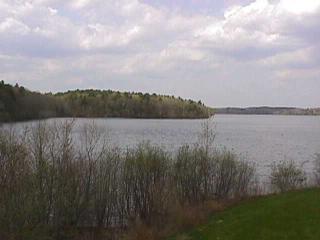Source Protection

Protect our source of drinking water: LAKE COCHICHEWICK
Drinking water sources are vulnerable to contamination that can cause our community significant expense and threaten public health. Water is a shared resource, and individuals, citizen groups, and your local community can participate in many activities to help protect your drinking water source, Lake Cochichewick. This page provides information on how to learn about source water protection in North Andover, things you can do to protect your drinking water and steps you can take in source water planning at the community level. The links to fact sheets, guides and other resources below can help citizens take an active role in source water protection.
We now understand that if we place greater emphasis on protecting our source of drinking water, maybe the cost for treatment can be reduced. North Andover is one of the 1st communities in the state to put together a Source Protection Plan and get it approved by the Department of Environmental Protection. This source water protection plan was put together by Linda Hmurciak who is the Assistant Superintendent of the Water Treatment Plant. The general components of a source water protection program include:
- Delineation: Identifying the area of land that water passes through to reach the drinking water intake. This is also known as our watershed.
- Contaminant Source Inventory: Mapping the locations of potential sources of drinking water contamination.
- Source Water Protection Area Management: Using regulatory controls, such as zoning or health ordinances, or nonregulatory controls, such as technical assistance to businesses and public education, to keep contaminants out of drinking water supplies.
- Contingency Planning: Plan special actions in case a sudden event ( for instance, a flood or spill) occurs that threatens the drinking water supply.
You can help protect our lake by following these helpful suggestions:
Septic Systems
- DO NOT use commercial septic tank cleaners.
- DO NOT pour hazardous materials such as paint, paint thinner, solvents, industrial cleaners, disinfectants, pesticides or waste oil down toilets or sinks.
- DO NOT pour grease or cooking oil down the drain. It will clog the soil and leaching system.
- DO NOT overload your system with food waste from the garbage disposal.
- DO NOT dispose of nonbiodegradable objects, such as diapers, down the toilet. They do not decompose.
- DO NOT use chlorine bleach.
- DO pump out the septic tank every two or three years.
- DO keep records of septic system maintenance.
- DO be alert to signs of a failing system such as the presence of wet areas above the leaching field and backing up of wastewater into your household drains following periods of heavy water use. DO make every effort to conserve water to avoid over burdening your system.
Hazardous Materials/Wastes Storage & Use
- DO NOT dispose of hazardous materials or wastes such as solvents, degreasers, waste oil, commercial cleaners, pesticides, paint thinner or radiator fluid by pouring them down a sink,toilet,floor drain, or storm drain.
- DO NOT dispose of such materials or wastes by pouring them on or burying them in the ground.
- DO practice "good housekeeping" and "best management practices" when handling and disposing of toxic or hazardous materials or wastes.
- DO pick up spill with adsorbent material and dispose of properly.
Fuel Storage Tanks
- DO NOT replace leaking underground storage tanks; remove them.
- DO replace with above ground tanks, preferably inside. Existing outside above-ground tanks should have containment structures and be protected from the weather. Existing underground tanks should be regularly tested and carefully monitored for leaks.
- DO check with the local fire department for regulations pertaining to testing for leaks, and other requirements for fuel storage tanks.
Lawn Maintenance
- DO NOT dump yard wastes in neighboring streams or wetlands.
- DO NOT use pesticides or herbicides near waterways in the watershed protection district, especially the lake or it's tributaries. Also, minimize the use of low nitrogen fertilizer near all waterways.
- DO leave or plant buffer zones with native plants near the lake or along the tributaries to filter out runoff.


